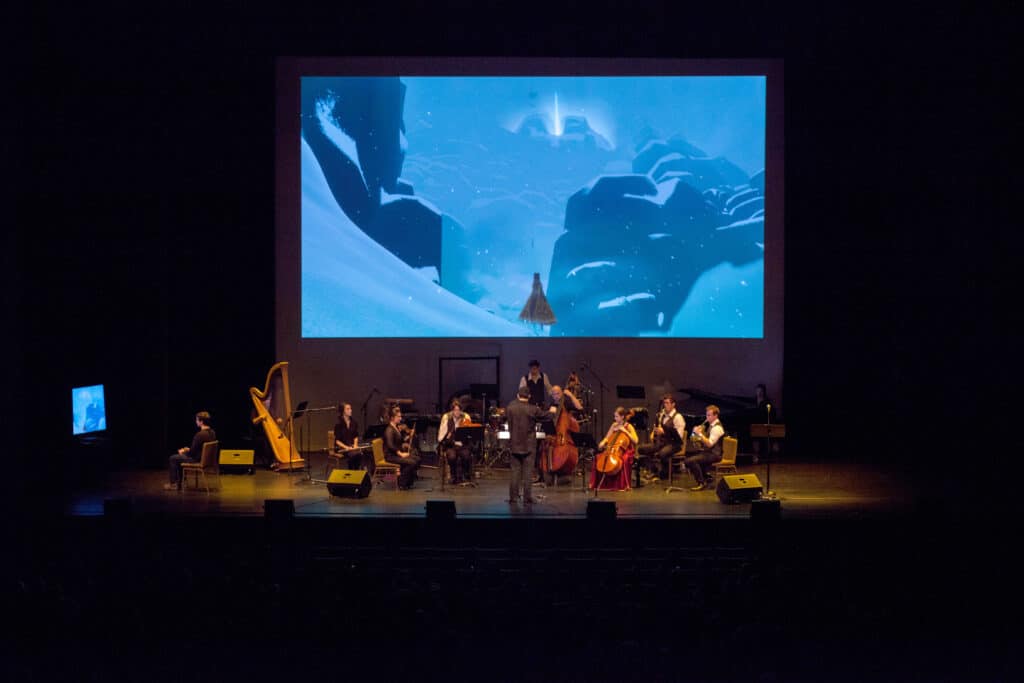San Francisco Performances’ Creative PIVOT
Eliminate music education in the public schools. Slash the budgets of cultural organizations. Add in more and more ways people can spend their leisure time other than with the arts. And what do you get?
“A lot of people in the arts are talking about it as a crisis,” says Christine Lim, director of artistic administration & education with San Francisco Performances (SFP). Like the proverbial tree in the forest that doesn’t make a sound if no one’s around, “the arts won’t continue without an audience.” They also won’t continue without the cultural and social network that the arts rely on for support.
Building audiences ranks high on the list of challenges for arts leaders like Lim, who also point to lack of financial and staff resources, and information as the main barriers to increasing and establishing a strong following. The New York City-based Wallace Foundation is doing something about it. In April 2015, it announced its selection of 26 music, dance, theater, opera, and multidisciplinary arts organizations around the country to participate in its six-year, $52-million “Building Audiences for Sustainability” initiative. SFP is one of them.
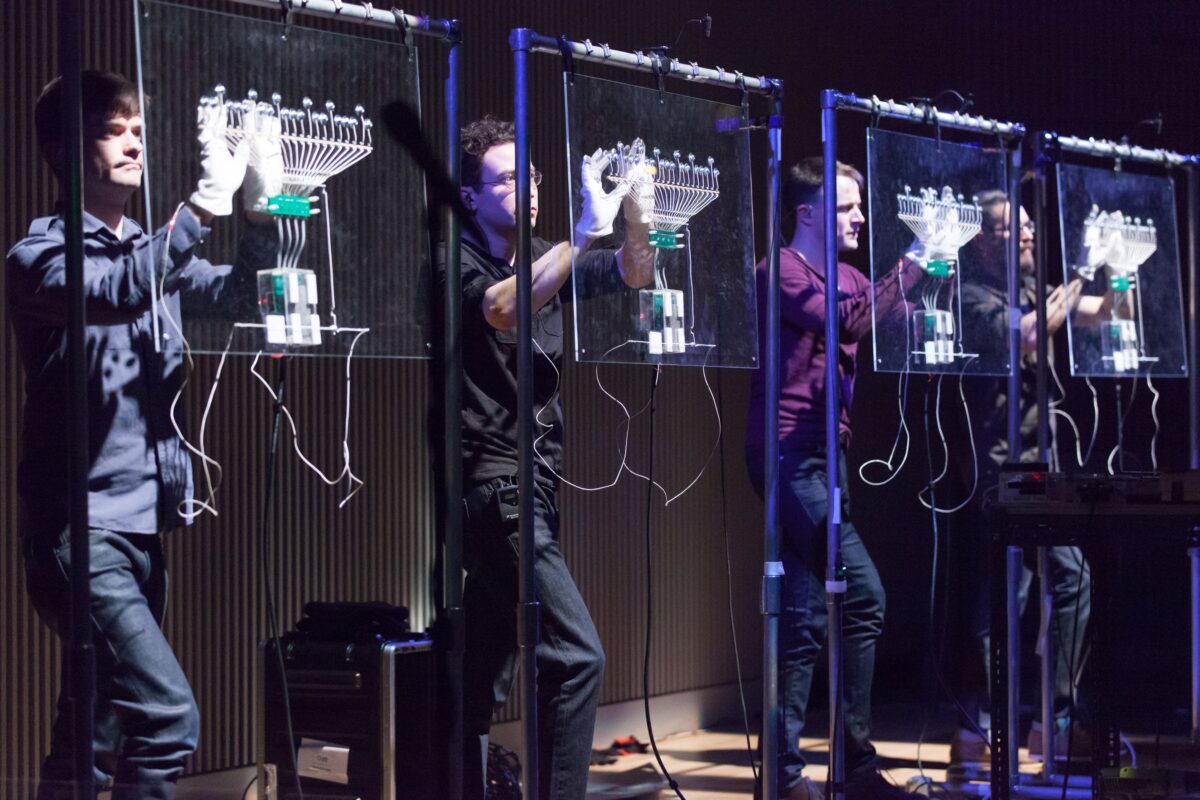

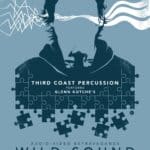


Founded in 1979, SFP each season presents more than 60 performances of classical/contemporary chamber music, jazz, contemporary dance, and guitar, vocal, and piano soloists in a variety of San Francisco venues. Lim says, “We’ve always presented art-song recitals, with some of the greatest artists in the world, and these used to sell out. Around the mid-2000s, we noticed a steep drop in subscription numbers. We’ve seen steady declines in our piano series, too, but not as drastic. We have a healthy percentage of donor roles and renewal rates compared to other arts organizations, but we’re still seeing declines there. And the rate of new donors and audience members isn’t keeping up with the rate of decline.”
In October 2014, SPF was one of 87 arts organizations, among 300, the foundation invited to submit audience-building proposals. Potential grantees, with annual budgets of $1.5 million to more than $20 million, were historically to have demonstrated fresh and original approaches to capture, increase, and sustain audiences for their high-quality arts offerings. The foundation awarded SPF a total of $355,000 in the first year of the four-year grant, plus additional technical support and research costs.
Most arts organizations, however, never see this kind of gift, but that shouldn’t stop them. Even the smallest-budgeted ones can learn from and adopt, at least in part, SPF’s efforts—from audience research and innovative programming, to artists’ engagement and interaction with audiences, to alternative venues and creative marketing and communications.
In 2015, its first year of the grant, SFP established and set loose its newest audience-building effort, PIVOT. The new music and contemporary-dance series lives up to its tagline, “New Adventures in the Performing Arts.” Four times a season, it stages first-rate programs by younger artists in informal and intimate venues, and pairs them with engaging pre- and post-concert artist-audience lectures and discussion.
PIVOT is just one more example of what SFP does so well in its long history of audience-building—and risk-taking. Over the years, the organization has presented the San Francisco recital debuts of such artists as solo-mandolin marvel Chris Thile in its Guitar Series and violin virtuoso Hilary Hahn on its mainstage. SFP’s Saturday Morning Series—held four times a season and bookended by lively lectures and discussion led by music-in-residence Robert Greenberg—has gathered a core of 500 chamber-music-lovers for the past two decades. It’s been about that long for Salons at the Rex. This early-evening series of seven performances, which takes place in a 75-seat room in San Francisco’s historic Hotel Rex, has featured up-and-comers like soprano Elza van den Heever and Bay Area pianist Sarah Cahill.
PIVOT’s first season, which kicked off March 2016, featured the JACK Quartet playing Georg Friedrich Haas’s “In iij. Noct” from each corner of the room, in total darkness, as specified by the composer. And Chicago-based Third Coast Percussion, with the San Francisco Exploratorium, presented an audio-video piece composed by drummer Glenn Kotche of the alternative rock band Wilco. Season two featured harpsichordist Mahan Esfahani, “the harpsichord revolutionary,” playing Kaija Saariaho along with Scarlatti; and Bach joined John Williams on Chinese guitarist Meng Su’s PIVOT program.
Lim says, “Especially with PIVOT, we’re introducing new artistic and aesthetic experiences to new audiences to open their ears and connect in a new way.” And not just with the music. “The key is to build a community of people who will come to trust that they’ll love and embrace these experiences.”
So who are these people? In SFP’s Wallace Foundation proposal, they hypothesized that they were Gen-X and millennial professionals in downtown-San Francisco’s Mid-Market district, a tech-boom-generated, urban-renewal area that embraces the arts. In 2014, American Conservatory Theater (A.C.T.) converted an abandoned movie theater in the neighborhood into a smaller venue for their patrons, the Strand Theater, and also began renting it out to SFP and other arts organizations. The Civic Center, San Francisco Opera, and San Francisco Symphony are just blocks away. Surely younger, educated people who lived and worked in this part of town were culturally curious. But SFP’s research about PIVOT-audience demographics showed otherwise.
The Wallace Foundation hired a marketing-research consultant to help SFP develop and prioritize the strategies and components of the PIVOT series, to attract patrons, define their target audience, and measure outcomes of those strategies. The organization emailed a large-scale, quantitative survey to 9,000 people. These were regular SFP patrons, and culturally inclined ones randomly drawn from a consumer e-panel within SFP’s geo-targeted patron area. Among other questions, they asked how much SFP was on their radar; how much spare time and expendable income went toward cultural activities; and whether they’d attend a performance by an artist unknown to them, just by the description. A focus-group firm helped set up four ten-person groups—one of loyal SFP patrons and donors, one of infrequent SFP ticket-buyers, and two of culturally inclined people with no SFP relationship. SFP also analyzed their patron database, to determine baseline demographic and behavioral information about their current audience, and how these patrons are interacting with SFP. This included buying behavior, number of first-time buyers, which genres attract them, their reactivation rate, whether audiences cross genres, and their crossover between genres.
A central finding of the research, particularly from the focus groups, revealed that the driving factor wasn’t age, but rather personal interests, values, and lifestyles. “That was a big surprise,” says Nancy Bertossa, director of communications at SFP. “We also found out that we generate a significant number of first-time buyers each season, but their reactivation is low.” The upside: a great opportunity for growth. “That led us to infrequent SFP-mainstage buyers as our target market for PIVOT, and across the organization.”
Totaling around 9,800, these patrons are 25-55-year-olds who have attended only one or two SFP-mainstage shows in the past five years. Intellectually curious, spontaneous, and open to surprise, they enjoy a mix of arts and experimental programming, exactly what PIVOT and SFP, in general, offer up. But that’s not enough for them. Unlike those already committed to SFP who are content with the art alone, the infrequent buyers also want an art-plus experience, a social component. That means later-evening (and occasionally late-night), 60-75-minute PIVOT performances, with no intermission, so patrons can go out before and/or afterwards. SFP’s focus groups also brought up price as a barrier for many, so shows are only $25, and there’s no subscription.
In October 2015, SFP sent a PIVOT-series promotional brochure to 14,000 people. Eleven percent of the series’ ticket-buyers came from the target market, nearly 24 percent were regular SFP patrons and 41 percent were brand-new ones. In the second year, target-market ticket-buyers jumped to 19 percent, while SFP regular patrons and first-time buyers dipped to 20 percent and 26 percent, respectively.

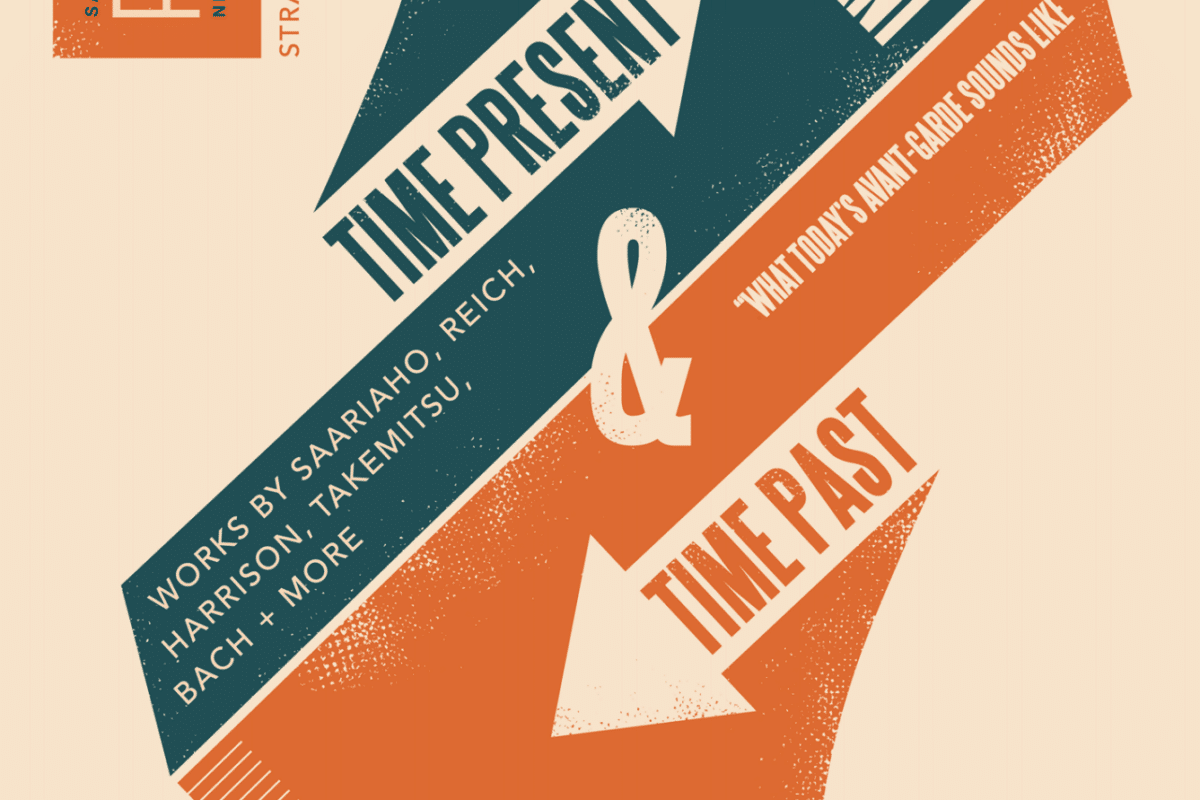
Lim says, “Especially with PIVOT, we’re introducing new artistic and aesthetic experiences to new audiences to open their ears and connect in a new way.” And not just with the music. “The key is to build a community of people who will come to trust that they’ll love and embrace these experiences.”
So who are these people? In SFP’s Wallace Foundation proposal, they hypothesized that they were Gen-X and millennial professionals in downtown-San Francisco’s Mid-Market district, a tech-boom-generated, urban-renewal area that embraces the arts. In 2014, American Conservatory Theater (A.C.T.) converted an abandoned movie theater in the neighborhood into a smaller venue for their patrons, the Strand Theater, and also began renting it out to SFP and other arts organizations. The Civic Center, San Francisco Opera, and San Francisco Symphony are just blocks away. Surely younger, educated people who lived and worked in this part of town were culturally curious. But SFP’s research about PIVOT-audience demographics showed otherwise.
The Wallace Foundation hired a marketing-research consultant to help SFP develop and prioritize the strategies and components of the PIVOT series, to attract patrons, define their target audience, and measure outcomes of those strategies. The organization emailed a large-scale, quantitative survey to 9,000 people. These were regular SFP patrons, and culturally inclined ones randomly drawn from a consumer e-panel within SFP’s geo-targeted patron area. Among other questions, they asked how much SFP was on their radar; how much spare time and expendable income went toward cultural activities; and whether they’d attend a performance by an artist unknown to them, just by the description. A focus-group firm helped set up four ten-person groups—one of loyal SFP patrons and donors, one of infrequent SFP ticket-buyers, and two of culturally inclined people with no SFP relationship. SFP also analyzed their patron database, to determine baseline demographic and behavioral information about their current audience, and how these patrons are interacting with SFP. This included buying behavior, number of first-time buyers, which genres attract them, their reactivation rate, whether audiences cross genres, and their crossover between genres.
A central finding of the research, particularly from the focus groups, revealed that the driving factor wasn’t age, but rather personal interests, values, and lifestyles. “That was a big surprise,” says Nancy Bertossa, director of communications at SFP. “We also found out that we generate a significant number of first-time buyers each season, but their reactivation is low.” The upside: a great opportunity for growth. “That led us to infrequent SFP-mainstage buyers as our target market for PIVOT, and across the organization.”
Totaling around 9,800, these patrons are 25-55-year-olds who have attended only one or two SFP-mainstage shows in the past five years. Intellectually curious, spontaneous, and open to surprise, they enjoy a mix of arts and experimental programming, exactly what PIVOT and SFP, in general, offer up. But that’s not enough for them. Unlike those already committed to SFP who are content with the art alone, the infrequent buyers also want an art-plus experience, a social component. That means later-evening (and occasionally late-night), 60-75-minute PIVOT performances, with no intermission, so patrons can go out before and/or afterwards. SFP’s focus groups also brought up price as a barrier for many, so shows are only $25, and there’s no subscription.

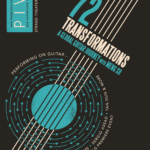
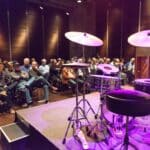

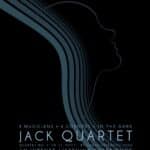
In October 2015, SFP sent a PIVOT-series promotional brochure to 14,000 people. Eleven percent of the series’ ticket-buyers came from the target market, nearly 24 percent were regular SFP patrons and 41 percent were brand-new ones. In the second year, target-market ticket-buyers jumped to 19 percent, while SFP regular patrons and first-time buyers dipped to 20 percent and 26 percent, respectively.
Lim says, “For each program, we find the right venue for it; we’re not bound to one.” The choices are many—A.C.T.’s Strand Theater; San Francisco Opera’s newly renovated, 299-seat, flexible Diane B. Wilsey Center for Opera; and SFJAZZ Center’s large auditorium and 80-seat Joe Henderson Lab. With PIVOT, the target audience cares about how SFP creates a sense of intimacy with the amenities of the space; for instance, many venues allow drinks during the performance. They also want to learn more, whether that’s encountering music that’s new to them or new ways of understanding it. And they want direct and meaningful engagement with the artists.
So SFP did individual, in-depth interviews with ten younger, exploratory artists they’ve worked with and/or plan to continue with, including Hilary Hahn, jazz violinist Regina Carter, the JACK Quartet, and pianist Jonathan Biss. SFP asked: What creative approaches had they taken to connect with their audiences? Is there anything they’d seen an artist or presenter do to attract new audiences? How could they help SFP better promote them? What would they like to try, to connect with audiences?
“They’re super-enthusiastic,” says Lim. “They want to do more partnering with presenters. And we’re open to their thoughts and desires as to how to shape each program, going beyond the traditional ways of doing things, breaking the fourth wall to try to reach their peers in the audience.” Maybe it’s a pre-concert explanation or a Q&A afterwards. “A lot of the artists are comfortable addressing the audience directly, something audiences respond to positively. It enhances the sense of intimacy for them.” So does SFP’s staff presence at performances, with an information table, informal lobby greetings and conversations, and announcements from the stage, if appropriate. “Then people can get to know the different members of our staff, so they know whom to approach if they have questions. It’s all about building personal relationships and histories with our audiences,” continues Lim.
Enter SFP’s marketing efforts. “We have a very generic name, and our research told us that many people don’t realize we’re the presenter of PIVOT,” says Bertossa. So all of their promotional venues now say “San Francisco Performances Presents PIVOT” followed by the series’ tagline. “People were also interested in more relaxed language and visuals,” a shift from SFP’s relatively formal style. From postcards, posters, and brochures to emails, social media, and their website, a lighter tone describes the series’ experience as a whole, rather than focusing on the artists. Instead of head-shot photos of the performers, illustrations and graphics convey a “cool-vibe feel” of what patrons can expect from PIVOT.
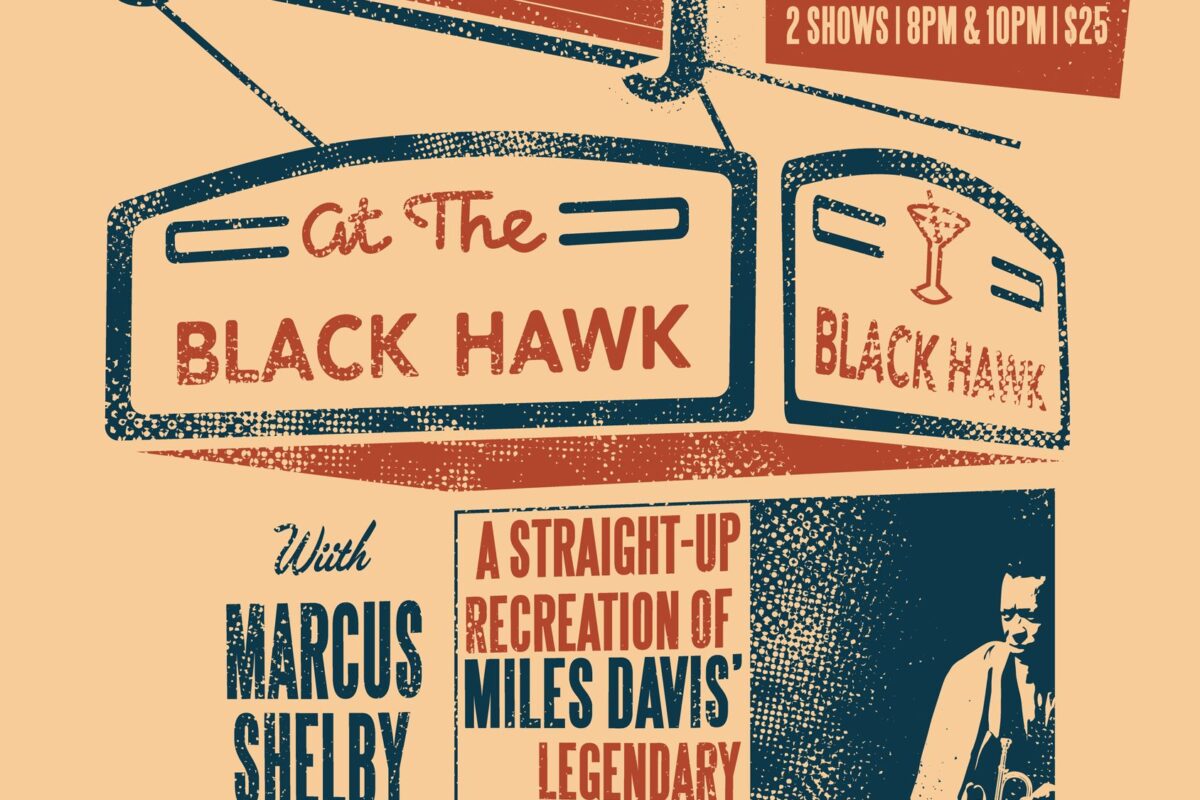

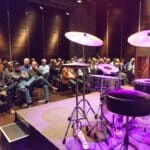
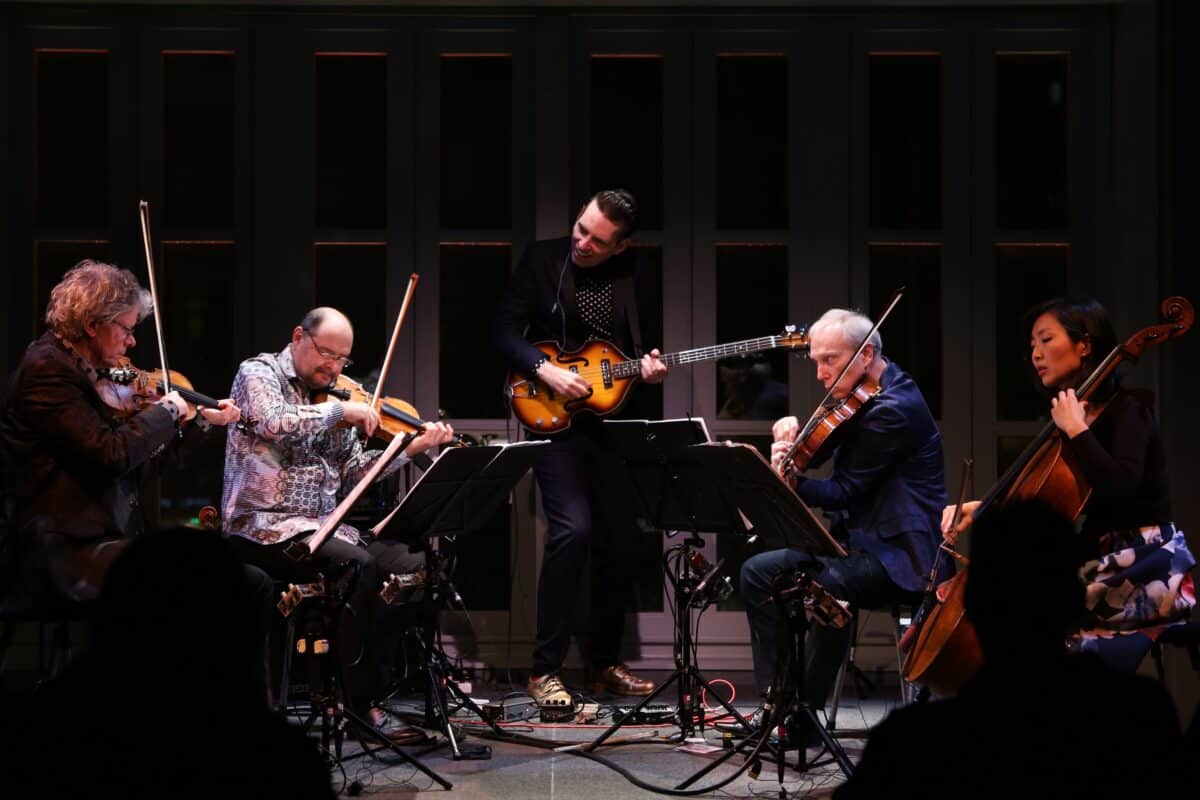
That feel extends into SFP’s social media, their main promotional focus. They start publicizing the series two months out on Facebook, sporadically and generally, and then in more detail a couple times a week within two to three weeks of each performance. Each post includes a direct link to buy tickets, yet another market-research insight. Pithy quotes land on Twitter; and as for Instagram, SFP is working harder to get pre- and post-performance backstage photos, and those of the audience.
A lot of the artists, being younger, are tech savvy, and a number have created their own videos in which they talk about their work—from the JACK Quartet with flashlights shined beneath their chins to Mahan Esfahani speaking from an airport while waiting for his flight. “The idea that artists, themselves, would start having a voice in their own promotions is huge,” says Bertossa. “They’re far more participatory in marketing themselves, and it’s so helpful”—for SFP, its patrons, and the artists.
Because paper promotions are still important to their audiences, they’ll see PIVOT posters displayed in stores and restaurants; and in their mailboxes, postcards for each of the series’ performances and SFP brochures. Everyone from single-ticket to top-subscription purchasers receives a welcome package, with a letter from SFP’s President, Melanie Smith; “elevator speeches;” and triple-fold program and venue information.
“We’ve learned a lot from our research and want to apply this knowledge to our organization, as a whole, in addition to PIVOT,” says Bertossa. “PIVOT’s target audience is a huge potential for us to slowly, over the next four to five years, bring them back to SFP and get them integrated into purchasing more each year. Our research shows that they’ll start becoming more curious and want to try our other offerings. Once they do, they’ll likely stick with us.”
Some PIVOT events, in SFP’s marketing of them, are paired with mainstage ones. For example, patrons who attend singer Gabriel Kahane’s performance receive a discount for a mainstage art-song concert. The same goes for Meng Su’s and the Guitar Series. “If we can convert those single-genre ticket-buyers to also experience other genres with us, we have a good chance of them deepening their relationship with us; and they’ll be stronger patrons, and more appreciative and understanding of what we do as a presenter,” continues Bertossa.
And if an audience member who’s intrigued by PIVOT and mainstage singers and guitarists follows those artists into the opera or other performance series in the city, all the better. Says Lim, “The ultimate lesson of this whole process is we have to start building our own communities of audiences as supportive advocates. Our long-term view is to help build an audience for the arts—not just for SFP, but for everyone.”

